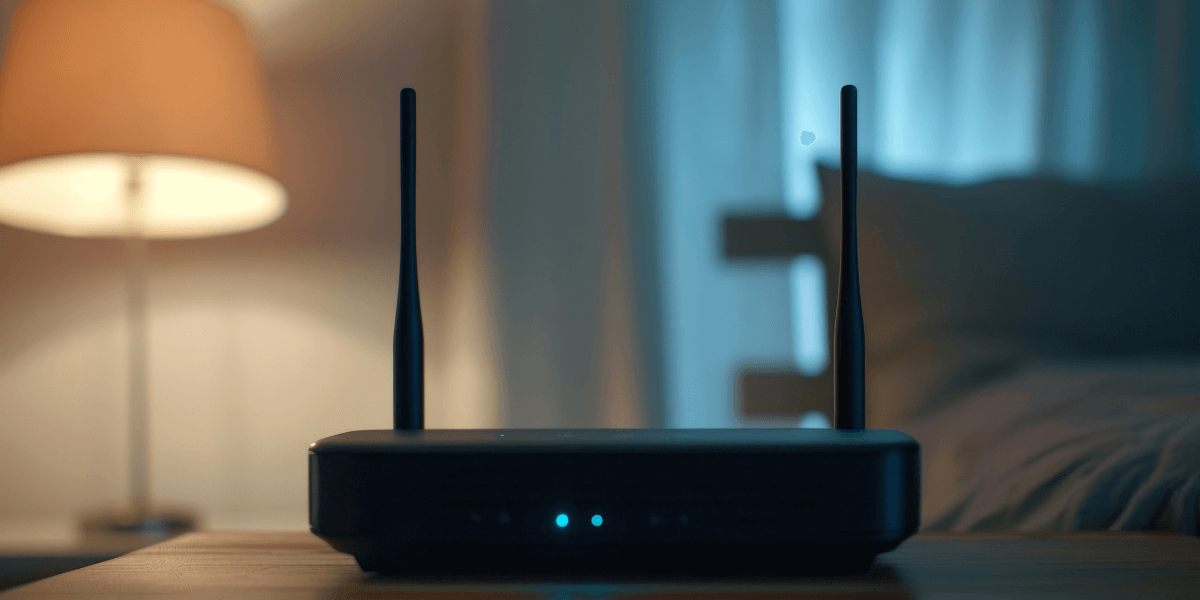Lower your internet bill
61% of people overpay for their internet.
Are you one of them?
Unlock exclusive offers in your area!
Call now
[tel]Enter zip code
1 Star is Poor & 5 Stars is Excellent.
* Required

Written by Caroline Lefelhoc - Pub. Apr 08, 2025 / Updated Mar 25, 2025
Table of Contents
Are you happy with your Internet service?

About the author
“Mom, just five more minutes!" Sound familiar? Your 10-year-old is glued to their tablet while dinner gets cold on the table. Meanwhile, your teenager has been in their room for hours, and you’re not entirely sure what websites they visit. If you’re like most parents, you’ve experienced the daily struggle of managing your children’s online activities.
Here’s a shocking reality: the average child now spends over 7 hours daily on screens, with much of this time connected to your home Wi-Fi [1]. Without proper safeguards, they’re just a few clicks away from inappropriate content, online predators, and digital addiction.
But don’t panic! The solution might be sitting in your home right now. That unassuming Wi-Fi router on your shelf holds powerful tools to help you regain control of your family’s digital life. No technical expertise required—just a few simple steps to transform your home network into a safer space for everyone.
Many parents install parental control apps on individual devices, but router-level controls offer significant advantages:
Router-based controls form a crucial first line of defense in your family’s digital safety strategy.

Finding parental controls
Every router model offers different features and interfaces, but the process of accessing these settings follows a similar pattern:
Most modern routers offer smartphone apps that provide easy access to settings:
The app interface is typically more user-friendly than browser-based options, making it perfect for quick adjustments and monitoring.
For more advanced settings, you’ll want to use your router’s web dashboard:
Once logged in, navigate to sections with names like “Parental Controls," “Access Restrictions," or “Family Settings."

Now that you’re in your router’s settings, here are the key features to look for and how to use them effectively:
One of the most powerful controls is the ability to schedule when the internet is available:
Most routers allow you to set daily quotas for internet access. For example, you might enable 2 hours of gaming console access on weekdays and 4 hours on weekends.
You can typically create schedules that automatically disconnect specific devices during:
Pro tip: Create different schedules for weekdays versus weekends, and adjust during school breaks or holidays.
Router-level content filtering helps prevent access to inappropriate websites across categories:
Many routers offer pre-configured filtering categories:
Simply check boxes for categories you want to restrict.
For more granular control, you can usually block specific websites:
Remember to block both HTTP and HTTPS versions of sites for complete protection.
Need an immediate internet break? Most router systems offer a quick pause feature:
This feature provides on-demand control without changing your permanent settings.
Advanced routers allow you to organize devices into profiles for easier management:
Group devices by family member:
This allows you to apply consistent rules across all of a person’s devices.
Apply different restriction levels based on age:
As children demonstrate responsibility, you can gradually adjust these settings.

More in-depth controls
If your router’s built-in controls don’t meet your needs, consider these advanced options:
Some routers allow you to change the DNS settings for enhanced filtering:
These services filter content at the network level before it reaches any device.
To get the most out of your router’s parental controls, follow these best practices:
For complete protection:
Technical controls work best alongside open conversations:
Find the right balance:
Parental controls are tools, not substitutes for guidance. The most effective approach combines technical safeguards with ongoing conversations about digital citizenship.
As children grow, gradually adjust controls to grant more freedom while maintaining appropriate boundaries. The goal isn’t perfect filtering—it’s raising children who eventually develop a healthy relationship with technology.
Starting with your router’s built-in controls, you can create a foundation for safer internet use throughout your home while teaching valuable lessons about responsible digital habits.
If your current router lacks robust parental controls, it might be time for an upgrade. The right internet provider can offer advanced routers with built-in safety features as part of their service packages.
Enter your zip code here to discover your neighborhood’s internet providers offering family-safety features.
Don’t compromise on your family’s online safety. Find the right provider today and confidently take control of your home network.

About the author
Congratulations, you qualify for deals on internet plans.
Speak with our specialists to access all local discounts and limited time offers in your area.
[tel]61% of people overpay for their internet.
Are you one of them?
Unlock exclusive offers in your area!
Call now
[tel]Enter zip code